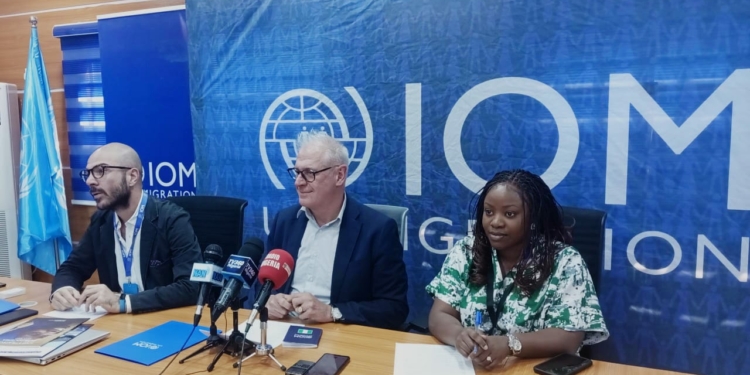- The International Organization for Migration (IOM) plans to introduce a pioneering housing concept for Internally Displaced Persons (IDPs) in Nigeria’s Northeast region
- The initiative, announced by IOM Nigeria’s Chief of Mission Laurent De Boeck, includes the ‘Home After Crisis’ design competition focusing on innovative, low-cost housing solutions
The International Organization for Migration (IOM) is poised to introduce a groundbreaking housing concept for Internally Displaced Persons (IDPs) in Nigeria’s Northeast region.
Laurent De Boeck, IOM Nigeria’s Chief of Mission, shared this development at a press conference in Abuja on Tuesday, preceding the announcement of winners for the 2023 ‘Home After Crisis’ design competition.
De Boeck highlighted the escalating violence in Northeast Nigeria since 2015, leading to an unprecedented housing emergency. By 2023, approximately 3.5 million people had lost their homes or lived in precarious conditions, exacerbating Nigeria’s acute housing deficit estimated at around 23 million.
“At IOM, we are committed to collaborating with the government and the people of Nigeria to boost the current housing construction rate, particularly with the private sector. Our focus is on moving beyond just providing housing units to embracing the concept of delivering a home,” stated the IOM chief.
The 2023 ‘Home After Crisis’ design competition, funded by the Nigerian Humanitarian Fund (NHF), emerged as part of IOM’s strategy to address the housing needs of IDPs. The competition engaged 1,600 designers, architects, and engineers from 100 countries, resulting in 250 low-cost and innovative housing design proposals.
De Boeck emphasized that the competition specifically targeted challenges associated with Nigeria’s rapidly growing population. The goal is to facilitate access to affordable housing constructed to withstand climate challenges using local materials.
In a move toward self-sufficiency, De Boeck announced that equipment and training would be provided to residents in the affected areas, enabling them to independently produce the materials required for the housing initiative. The innovative approach seeks to not only address the housing crisis but also empower local communities to build sustainable solutions for the long term.










Discussion about this post